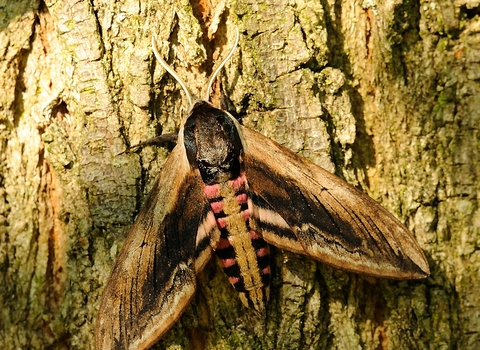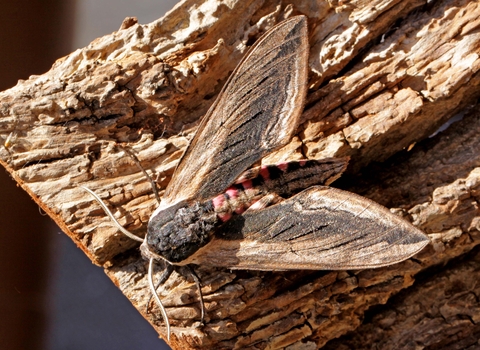
©Amy Lewis

©Margaret Holland
Privet hawk-moth caterpillar ©Roy Bedborough
Privet hawk-moth
With a torpedo-shaped body and long, narrow wings, the privet hawk-moth is a striking garden visitor. But the caterpillars really stand out: lime-green, with purple streaks and a black hook at the tail end.
Scientific name
Sphinx ligustriWhen to see
June to JulySpecies information
Category
Statistics
Wingspan: 9.0-12.0cmCommon.
